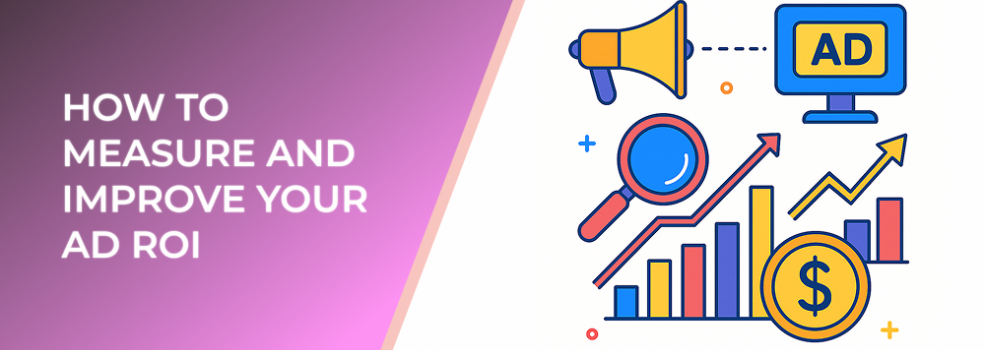In this article, we break down how to accurately measure your advertising ROI and share proven strategies to boost it across different platforms.
Understanding Ad ROI
Return on Investment (ROI) is one of the most important metrics for evaluating ad performance. It shows how much revenue your campaigns generate relative to the cost of running them. The formula is simple:
ROI = (Revenue from Ads – Ad Spend) / Ad Spend x 100
This metric helps determine whether your marketing investments are profitable and which channels deserve more budget.
According to HubSpot, marketers who track ROI are 1.6x more likely to achieve higher budget growth than those who don’t. Tracking ROI consistently ensures smarter allocation of resources and faster performance improvements.
Step 1: Define Clear Conversion Goals
Start by identifying what counts as a conversion for your campaigns. Depending on your objectives, a conversion could be:
-
A purchase
-
A sign-up or registration
-
A form submission
-
A visit to a key landing page
Setting measurable goals allows you to align campaign tracking and attribution models accordingly.
Step 2: Track Costs Accurately
Your ad spend includes more than just the platform budget. Factor in all costs such as creative production, software tools, and management fees. Missing these components can make ROI appear higher than it really is.
A recent Wordstream study shows that average conversion costs vary dramatically across industries — from around $20 for e-commerce to over $150 for B2B services. Knowing your true cost per conversion helps benchmark performance and identify inefficiencies.
Step 3: Use Multi-Touch Attribution
Single-touch models (like last-click attribution) can be misleading. Most buyers interact with multiple ads and platforms before converting. Multi-touch attribution provides a more realistic picture by crediting each channel for its contribution to the final conversion.
Marketers using multi-touch attribution report up to 30% more accurate ROI calculations and can reallocate budgets to high-impact touchpoints.
Step 4: Optimize for Incremental ROI
ROI improvement doesn’t just mean spending less; it means spending smarter. Here are several proven ways to boost your advertising efficiency:
-
Test and Refine Creatives: A/B testing different visuals or messages can increase engagement rates by up to 20-40%.
-
Improve Targeting: Use audience segmentation and lookalike modeling to reach users most likely to convert.
-
Focus on High-Performing Channels: Analyze ROI by platform and concentrate your budget on those with the highest return.
-
Reduce Frequency Fatigue: Overexposure lowers engagement and increases costs. Monitor frequency caps to maintain freshness.
Step 5: Analyze Long-Term Value
Short-term ROI is only part of the story. Many conversions lead to recurring revenue or long-term customer relationships. Track Customer Lifetime Value (CLV) alongside ROI to identify campaigns that drive sustainable growth.
According to Bain & Company, a 5% increase in customer retention can boost profits by up to 95%, highlighting why long-term performance metrics matter.
Conclusion
Accurate ROI measurement turns data into actionable insight. By refining goals, tracking costs, applying advanced attribution, and optimizing spend, you can achieve consistent improvements in ad profitability. ROI isn’t just about proving value — it’s about uncovering opportunities to scale smarter.
Continue Reading
For more insights on improving advertising performance, explore these related articles:

